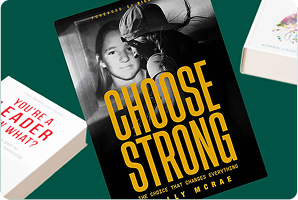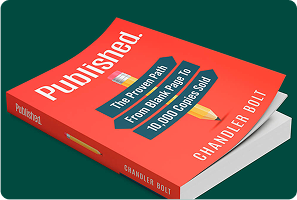Book Royalties Calculator
How to use:
1 | Choose your publishing method
- Traditional Publishers: Includes the “Big 5” (Hatchett, HarperCollins, Macmillan, Penguin Random House, Simon & Schuster). Select this option if you plan to work with these companies.
- Indie Publishers: Smaller, niche-focused publishing houses, also called small presses.
- Self-Publishing Platforms: Print-on-demand platforms like Amazon KDP, IngramSpark, or KoBo.
2 | Select your book type
Indicate whether you’ll publish an eBook or a printed book. Use the calculator twice if publishing both formats.
3 | Adjust your royalty rate
Modify the rate if necessary.
Enter your book’s cover price.
Input the retail price for your book.
4 | Click “Calculate” The calculator will display your results.
See how much you’ll earn per book and per 1,000 books sold. Use the comparison chart to evaluate earnings across publishing methods.

1. My book will be published by a...
2. My book will be an:
3. My royalty rate will be:
*Please note that this royalty rate is based on the market averages for paperback books. Actual royalty rates for traditional and indie publishing can vary by author depending on several factors.
4. My book's retail price:
5. The # of books sold:
Your Profit per Book Sold
For books sold, you earn:
For 1,000 books sold, you earn:
For 10,000 books sold, you earn:
Royalties Comparisons for 10,000 books sold
Free Book Writing Tools

Companies Quiz

Book Title Generator

Nonfiction Outline

Free copy of Published.
What are Book Royalties?
This free book royalty calculator helps you to determine what royalties you can receive with self-publishing and traditional publishing routes. A book royalty is a percentage of the revenue an author receives for each book sold.
In traditional and independent publishing, the author receives a contract from the publisher which includes royalty percentages, book rights, advances, and other legal terms. The author’s royalty fee is decided upon by the publisher, usually on a case-by-case basis, depending on several variables such as the author’s credentials, book genre, book type, and more.
In self-publishing, the author is given a royalty rate based upon the self-publishing platform that the author uses to publish the book. Book royalty rates on self-publishing platforms are typically standard and consistent for all authors, and will typically only vary depending on the type of book (ex: eBook, print, hardcover).
How do Book Royalties work?
Book royalty rates are typically calculated as a percentage of the gross or net revenue for each book sold. For example, if the net revenue of a book is $10.00, and the author’s royalty rate is 15%, the author would receive $1.50 in profit for each book sold.
The terms in your book’s contract, or which publishing route you decide to take, will determine when you receive your book royalties, and how often you are paid. For example, if you self-publish through Amazon’s Kindle Direct Publishing, royalties are paid out monthly, approximately 60 days after the end of the month in which the royalties are earned.
However, if you publish traditionally and receive an advance, you will likely not be paid your book royalties until you have essentially been able to pay back the amount of any initial advance with your book sales. Because there are many variables involved, be sure to check with your publisher to get clear on the payment process.
Why are Book Royalties important?
An author should be thoroughly educated on all of the terms in the publishing contract, especially when it comes to understanding their book’s royalty rate.
This is because royalties are directly linked to an author’s profit. By determining what your royalty rate is, you can learn how much profit you should expect to see from your book sales.
What is the standard rate for Book Royalties?
Below is a chart that breaks down the standard author royalty rates. However, please note that these royalties have been calculated based on market averages.
An author’s actual royalty rate can vary depending on several factors, especially if the book is being published by an actual publishing house, such as a traditional big 5 publisher or indie publisher.
- The author’s experience, credentials, and social following
- Book genre
- Book type
- Book length
- Any advancements
- Amount of books sold
- And more!
| Publishing Method | Book Type | Royalty Rate |
|---|---|---|
| Traditional | 8% | |
| Traditional | eBook | 25% |
| Indie | 85 | |
| Indie | eBook | 25-35% |
| Self Publishing | 60% | |
| Self Publishing | eBook | 70% |
How to use the Book Royalty Calculator
Here are the steps on how to use this book royalties calculator to determine your royalty rate, and book profit potential based on each publishing method.
Reasons to use this Book Royalties Calculator:
#1 – To compare your book’s earning potential
#2– To plan for book sales and earnings
#3 – To keep track of how many books you need to sale to meet your goal
#4 – To understand how book royalty rates work
#5 – To get a clear picture of the earning differences amongst the three types of publishing
Traditional vs Indie vs Self-publishing
If you’re deciding which publishing method to pursue for your book, there are several factors to account for.
There are many pros and cons involved with each, so it’s important you familiarize yourself with each method, and do extensive research before deciding which option is the right path for your author career.
However, if you’re considering the publishing option in terms of earning potential, it’s important to realize that self publishing has the highest earning potential, and allows authors to keep the rights to their work, as well as all creative control during publishing.
Self publishing can also be tricky to navigate as a beginner, which is why we always encourage our readers to invest in a quality self publishing course to learn the ins and outs of the trade. Learn it once, then apply the strategies to all of your future books!
Check out our Publishing Guide for How to Choose for a more in-depth analysis on the differences between self publishing and traditional publishing.




















